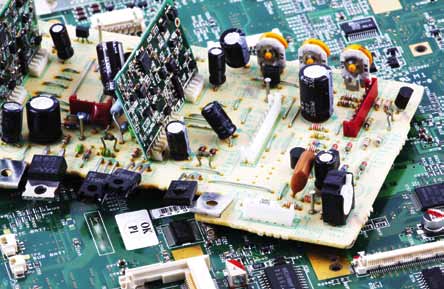
Electronic devices containing delicate components can be easily damaged, unless they are rugged. A truly durable electronic device or gadget is one that substantially reduces the failure and repair cost while maintaining its look, feel and functionality over its lifetime.
Electronic equipment reliability and repair is a major concern to consumers due to many reasons including mass production, incompetent manpower to repair, least concern of companies about the quality of the product, and absence of strict rules and guidelines to protect consumer rights.
To meet the challenge of reliability, there is a need of leading-edge information that is critical to the creation of reliable electronic devices and materials, focus on interdisciplinary communication in reliability of state-of-the-art electronic devices and microsystems, and focus on the materials and processes used in the manufacture of electronic devices, and the interfaces and surfaces of these materials.
Here are some guidelines for product manufacturers to ensure reliability of their products, obligations on part of the seller, role of the government in consumer protection, and guidelines for the consumers to get the best value for their money.
Guidelines for designers
Designers of electronic devices must be aware of the various points of failure and how to remove these through a sound design. Unlike mechanical parts, electronic components generally do not wear out per se, but discrete analogue component parameters tend to drift over time and can cause problems with sensitive designs. Integrated circuits can undergo electro-migration. Furthermore, environmental effects, corrosion, vibration and temperature are of extreme concern. Transient stresses such as electrostatic discharge and lightning can also cause failures.
So to ensure that an electronic system will not fail beyond some tolerance, careful design principles have to be employed. The reliability of electronic devices can further be ascertained with proper warranty and repair services.
Government’s duty
Laws should protect the consumers by regulating service dealers and service contract providers. These should also provide tips for consumers seeking repairs, as well as tips on purchasing electronic devices. To protect consumers, electronic devices, gadgets and major home appliances used or sold for personal, family, household or office use should be covered under the law for installation, repair, service and maintenance.
On part of the distributor
Almost all major electronic product distributors offer the original purchaser the same warranty as provided by the product manufacturer.
Basic electronic systems are warranted for one year on parts and labour. Warranty is limited only to defects in workmanship or mate-rial that may impair the equipment’s performance. No warranty is given to normal wear-and-tear items. Also, no warranty is given for damages caused by external wiring, improper connection to the power supply or line wiring, or for damages caused by spikes, power surges, brownouts, lightning, static electricity or radio waves. A company’s aim should be to ensure that the customers are satisfiedwith their purchase. The company should give top-priority service not only to the warranty requests but even otherwise.
[stextbox id=”info” caption=”Consumer checklist”]
After purchase
Carefully read the guidelines manual and follow its recommendations for use, care, cleaning and maintenance. If you lose the user’s manual, contact the manufacturer for another copy. You might save yourself a service call by doing these simple checks if your product fails to operate:
1. Is the cord plugged in?
2. Is the start control fully in the ‘on’ position?
3. Is there a reset button or some other device that will get the unit back in operation?
4. Are there any loose connections?
5. Is the electric outlet working? Check by trying another outlet.
6. Are all the fuses intact, and is the circuit breaker ‘on’?
When in need of servicing or repairs
1. Do not try to repair the product yourself or take it to an unauthorised repair facility. Doing so can void your warranty
2. Get referrals for reputable repair dealers from your family, friends or co-workers
3. Check to see that the dealer has a valid registration
4. Get a written estimate for any service or repair before the work is performed
5. Obtain at least two estimates
6. Find out whether a diagnosis fee will be charged if the item is not repaired
[/stextbox]Electronic equipment distributors should honour warranty obligations or product recalls issued by the original equipment manufacturer if the products are returned for repair or replacement because of a defect or fault. During the warranty period, the cost of repair or replacement is not borne by the warranty claimant. The warranty is given before or at the time of sale of the equipment to the warranty claimant and it identifies the following:
1. The warrantor and any other party such as the wholesaler or retailer, who may receive the electronic equipment returned under warranty






